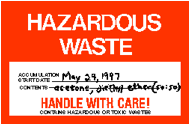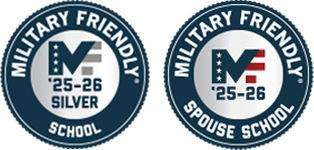Lab Waste Handling Procedure
Introduction
SUNY New Paltz is dedicated to the maintenance of a safe, healthy and productive workplace environment. As part of our commitment to environmental health and safety, we strive to ensure that our students, faculty and staff meet or exceed state and federal regulations concerning hazardous wastes, laboratory management and worker safety.
Proper storage and disposal of laboratory waste is a key element of this commitment. If you generate or handle wastes in this Department, it is incumbent upon you to follow the established guidelines concerning the proper disposal of hazardous waste.
The purpose of this document is to assist you in proper handling and disposal of hazardous chemical waste. If at any time you are unsure how to deal with wastes, immediately consult your supervisor or one of the contacts listed at the end of this document.
The 5 Most Common (Deadly and EPA-Fineable) Errors In Waste Handling
Even experienced laboratory workers have a tendency to become lax or complacent in the laboratory when they are "just cleaning up". Unfortunately, "just cleaning up" involves hazardous chemicals, and if these are disposed of or segregated improperly the results can be tragic. Most serious laboratory accidents occur during cleanup, when one's attention is more focused on going home or out to eat rather than on the potential hazard at hand.
Proper management of hazardous waste does not need to be an all-consuming task, but it does take discipline, vigilance and common sense. Listed here are 5 of the most common mistakes in hazardous waste handling in the laboratory. Print this list out and make sure that none of these are occurring in your laboratory!
- Improper Labeling of Waste
Typical examples include: 
- Failing to label a waste bottle. If the contents of the bottle are not listed, the next person to use the bottle could accidentally combine incompatible chemicals, causing a fire and explosion. ALL bottles of chemical waste must have one of these red stickers with the start date and contents filled out. You can get these stickers from the SUNY Env , Health and Safety Dept.
- Storing waste in a bottle lacking the words "Hazardous Waste". Only these exact words must be used. "Organic Waste", "Xylene Waste" etc. are unacceptable. If something isn't really waste, don't put the word "waste" on the bottle. Label it "used" etc.
- Scratching out the former contents of the bottle and writing "Waste" on the bottle. You must remove or totally deface the old label so there is no confusion over the contents. "Waste" is an unacceptable term to the EPA or OSHA -- the words "Hazardous Waste" must appear on the bottle. And as in a), always put one of those red Hazardous Waste stickers on the bottle.
- Improper Segregation of Waste
Typical examples include:
- Storing acids and bases in the same cabinet. Leaking containers or a spill could cause a violent reaction which would release large quantities of toxic gases.
- Storing acids and organic waste in the same cabinet. In the event of accidental mixing, a catastrophic fire or explosion could result.
- Mixing incompatible chemicals in a waste container. For example, nitric acid and ethanol can form an explosive mixture. Take a look here for an example of what can happen when incompatibles are mixed.
- Improper Storage of Waste
Typical examples include:
- Storage of waste in a fume hood where reactions are being carried out. If your reaction gets out of control, the waste bottle could explode and lead to a catastrophic fire or mixing of incompatible chemicals. Always remove waste bottles from hoods where reactions are being performed.
- Using metal cans for waste. Even near neutral pH, solids and liquids can easily corrode through metal cans in a surprisingly short period of time. Use only glass or polyethylene containers for waste.
- Storing flammable waste containers on a bench or floor. You wouldn't do this with reagent chemicals, so why would you do it with waste? Store your waste containers in a cabinet, preferably an explosion-resistant solvent cabinet.
- Storing waste bottles in or near a sink or floor drain. This could allow toxic chemicals to enter the sewer, contrary to EPA regulations.
- Failure to Cap Waste Bottles
Typical examples include:
- Leaving the cap off an organic waste bottle. The only time a cap should be off a waste bottle is when you are actually putting waste into it. If you are afraid of a pressure buildup in the bottle, simply cap it loosely.
- Leaving a funnel in the waste bottle. This is unacceptable. A funnel can too easily be moved to an adjacent (incompatible) waste bottle and result in a fire or explosion. When you are done with it, cap it!
- Accumulation of Excessive Waste
SUNY Env, Health and Safety should be contacted to remove excess waste from Satellite accumulation areas.
How To Segregate Waste In The Laboratory
Proper segregation of laboratory waste is essential to good chemical hygiene and a safe workplace environment. Many researchers often tend to put all of their wastes into the same cabinet or fume hood. Doing so can have disastrous results!
The guidelines for temporary storage of chemical wastes in the laboratory are really no different than those that you use for the storage of your usual lab chemicals. The most important rule is to make sure that any chemicals or wastes that stored together are compatible with each other!
Therefore, proper segregation of wastes involves making sure that wastes within a bottle are compatible, but it also means that you should NEVER store the following types of wastes near each other:
- Acids and bases.
- Organics and acids.
- Cyanide, sulfide or arsenic compounds and acids.
- Alkali or alkali earth metals, alkyllithiums etc. and aqueous waste.
- Powdered or reactive metals and combustible materials.
- Mercury or silver and ammonium containing compounds.
If a bottle broke in a waste storage area where incompatibles were present, the results could be disastrous. Remember: incompatible bottles of wastes should be stored in separate cabinets, preferably as far apart as possible!
WASTE CONTAINERS MUST BE CAPPED AT ALL TIMES
Who To Contact For Further Information
If you're not sure how to dispose of a particular chemical, check with your supervisor or consult the the Chemical Hygiene Plan for your laboratory (each lab should have a copy in your lab).
- If you have questions about hazardous waste, contact your supervisor or the SUNY NP Env , Health and Safety office at 3310.
- If you have questions about the Chemical Hygiene Plan or any other aspects of laboratory safety, contact your supervisor
- You may also determine the hazards associated with wastes by consulting the appropriate Material Safety Data Sheet (MSDS) or the new GHS Safety Data Sheets (SDS).
